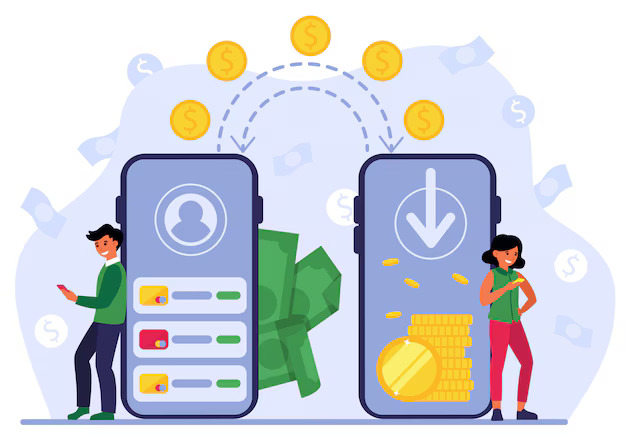Understanding Software Maintenance Cost and Its Impact on Your Business

Strong 8k brings an ultra-HD IPTV experience to your living room and your pocket.
Software maintenance is a crucial aspect of the software development lifecycle, ensuring that applications remain functional, secure, and efficient over time. However, many businesses underestimate the software maintenance cost, which can significantly impact their budget. Understanding the factors influencing these costs and adopting cost-effective strategies can help organizations manage expenses efficiently.
What is Software Maintenance Cost?
Software maintenance cost refers to the expenses incurred to update, modify, and enhance software after its initial deployment. It includes bug fixes, performance improvements, security updates, and feature enhancements to keep the system aligned with business and technological changes. Additionally, ongoing maintenance ensures software compatibility with emerging technologies, preventing costly overhauls in the future.
Software maintenance is not a one-time process but a continuous cycle that keeps software running smoothly. Neglecting maintenance can lead to higher costs in the long run, including system failures, data breaches, and decreased user satisfaction. Companies must account for these costs in their IT budgets to avoid unexpected financial burdens.
Key Factors Affecting Software Maintenance Cost
Complexity of the SoftwareMore complex applications require extensive maintenance efforts, leading to higher costs. Large enterprise solutions with multiple integrations and dependencies often demand continuous monitoring and updates.
Code Quality and DocumentationPoorly written code and lack of proper documentation increase maintenance efforts, making the process time-consuming and expensive. A well-structured, modular codebase with detailed documentation reduces debugging and troubleshooting time.
Technology StackOlder or obsolete technologies require more effort to maintain, increasing the overall software maintenance cost. Upgrading legacy systems or migrating to newer frameworks can significantly reduce long-term maintenance expenses.
Security Updates and ComplianceRegular security patches and compliance with industry regulations contribute to recurring maintenance expenses. Businesses handling sensitive customer data must stay ahead of security vulnerabilities to avoid breaches and regulatory fines.
User Feedback and EnhancementsBusinesses often update software based on user feedback, requiring continuous improvements and feature additions. Without regular updates, software may become outdated, leading to decreased user satisfaction and loss of market competitiveness.
Integration with Third-Party ServicesSoftware often relies on third-party APIs and services, which require frequent updates to maintain compatibility. Changes in third-party platforms can necessitate software modifications, adding to maintenance costs.
Infrastructure and Hosting CostsCloud-based applications require continuous server maintenance, monitoring, and scalability adjustments, all contributing to ongoing maintenance costs.
Types of Software Maintenance
Corrective MaintenanceFixing bugs, errors, and performance issues to ensure smooth functionality. This includes resolving defects reported by users or identified through testing.
Adaptive MaintenanceModifying the software to keep it compatible with changing environments, such as OS updates, cloud migration, or new hardware requirements.
Perfective MaintenanceEnhancing software functionality based on user needs and market trends. This may include UI/UX improvements, adding new features, or optimizing existing workflows.
Preventive MaintenanceProactively identifying potential issues to reduce future breakdowns and maintenance costs. Regular system monitoring, automated testing, and performance tuning fall under this category.
How to Optimize Software Maintenance Cost
Use Modern and Scalable TechnologiesAdopting up-to-date frameworks and technologies reduces maintenance complexity and costs. Scalable architectures, such as microservices and serverless computing, help minimize infrastructure overhead.
Implement Clean Coding PracticesWriting well-structured, documented code makes maintenance easier and more cost-effective. Following best practices like modular development, code reviews, and version control enhances long-term software sustainability.
Automate Testing and MonitoringAutomated tools help detect bugs early, reducing manual efforts and minimizing costs. Continuous integration/continuous deployment (CI/CD) pipelines and automated regression testing prevent defects from reaching production.
Outsource Maintenance to ExpertsHiring professional software maintenance teams can reduce in-house workload and optimize expenses. Outsourcing to experienced vendors ensures timely updates and efficient troubleshooting.
Regular Software AuditsConducting periodic performance and security audits helps in early issue detection, preventing costly repairs. Performance optimization, database tuning, and vulnerability assessments help in sustaining software efficiency.
Prioritize Essential UpdatesNot all updates are urgent. Businesses should focus on critical patches and performance optimizations while deferring less critical enhancements to align with budget constraints.
User Training and SupportProviding user training and clear documentation reduces the number of support requests and unintended errors, minimizing maintenance-related costs.
Optimize Cloud UsageCloud-based applications require monitoring of usage levels, database optimization, and cost-control measures to avoid unnecessary infrastructure expenses.
Proactive Monitoring and AlertsUsing AI-driven monitoring tools can help detect potential issues before they impact the software, reducing emergency maintenance costs
Note: IndiBlogHub features both user-submitted and editorial content. We do not verify third-party contributions. Read our Disclaimer and Privacy Policyfor details.







